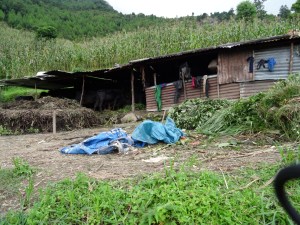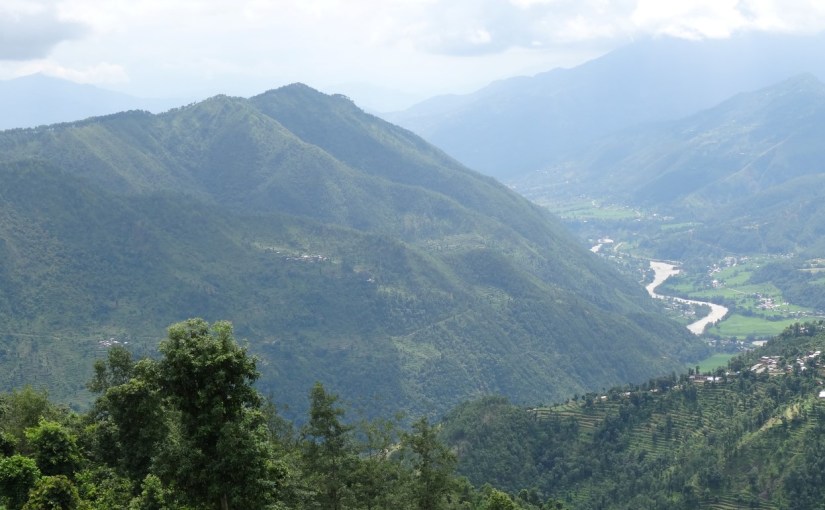2 weeks ago, my sister and I visited Hari’s village for 4 days. We walked around with him, visiting his friends and the neighbouring schools.
Life was going on peacefully there. The atmosphere is very quiet: lots of rice and corn fields, small houses here and there, children in uniforms going to or coming back from school.
It does not struck you immediately that almost every single house there collapsed four months ago during the earthquake.
They quiclkly rebuilt the most important walls, just enough to put corrugated iron roofs to survive the moonsoon season that is about to finish now. The loud music of the heavy rain orchestra falling on these thin metallic roofs still echoes in my mind. And when the sun shines back, these tiny houses turn into human-sized oven. But when the sun shines, nobody is inside. Everyone is in the fields, cultivating their own vegetables and cereals to feed themselves, their goats and their buffalos. During the earthquake the weather was good and everyone was outside, which saved numerous lives. Imagine what would have happened if it struck during the night.

I was very happy to meet again Hari’s family. Last time was 4 years ago, when I was teaching in the school nearby.
Regarding schools, most of them turned into iron-schools. Where being a man who turns into an Ironman is good, life of iron-schools is less great, for any rainfall gladly creates enough noise to cover any attempt of the teachers to make themselves understood properly in the classroom. Moreover, when rain is not a problem, the noise of neighbouring classrooms is one. Nepali students are unexpectedly crazily enthusiastic when it comes to studying by repeating what the teacher says, which is a common practice here. Their enthusiasm really made me happy, and I could not help thinking about how much we tend to dislike school in developed countries.

